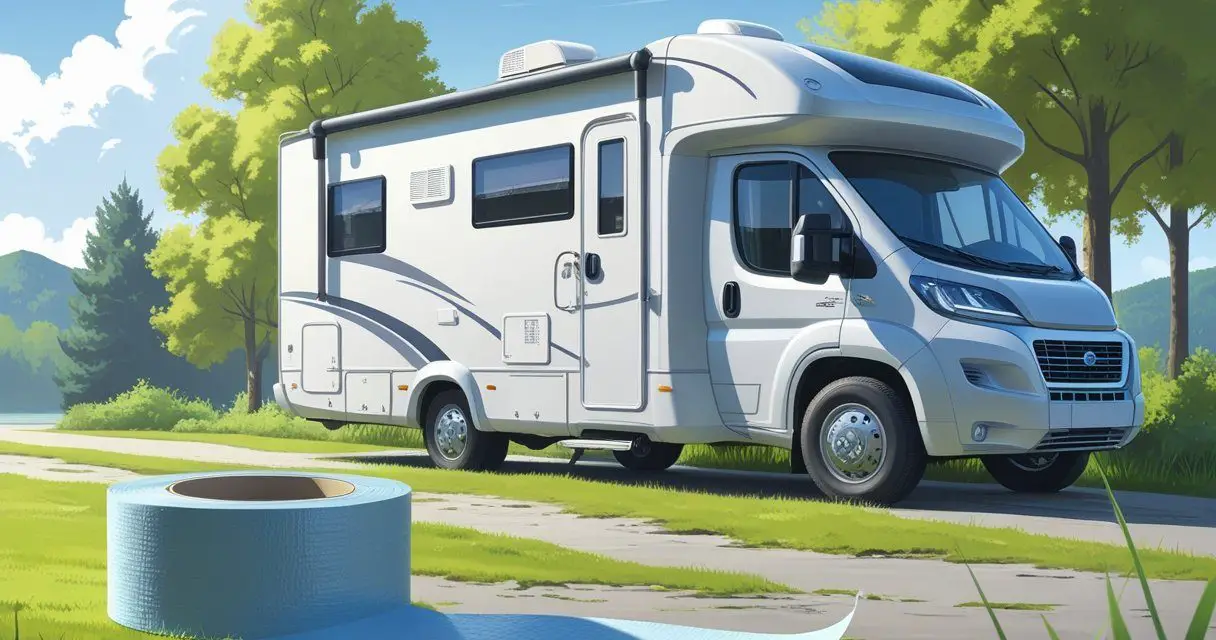Would you like to save this article?
Owning a travel trailer is an exciting adventure that opens up a world of exploration and freedom on the open road. However, maintaining these homes on wheels requires specialized knowledge that many owners simply don’t have until problems arise. Regular inspections are crucial to prevent costly repairs and ensure your RV investment maintains its value for years to come. Understanding what to look for during these inspections can be the difference between a minor repair now and a major headache later. We found a great video from the “Your RV Specialists” YouTube channel, and below in this article are the highlights of essential inspection points shared by top RV technician Dustin. Make sure to watch the entire video at the bottom of this article for the complete walkthrough of these valuable maintenance tips.
1. Slideout Rail Inspection: Single vs. Double Rails
The video begins with Dustin examining an Outdoors RV Titanium series travel trailer’s slideout rails. He explains that slideouts come with different rail configurations depending on the weight they need to support.
“Depending on what is in the slideout and what’s going on… if you see this one has got a double bracket right… this unit has a refrigerator in it… and because of the heaviness of the room that’s why this has a double rail on that.”
It’s fascinating how RV manufacturers engineer these movable rooms to handle different loads – kind of like how I can only handle two slices of pizza before needing a “double rail” support system for my waistband!
When inspecting your travel trailer, check if your slideouts have the appropriate rail configuration for what they’re supporting. Heavier slideouts containing refrigerators and kitchen components typically need double rails for proper support and operation.
2. Putty Tape Maintenance: The Warning Signs
One of the most crucial inspection points Dustin emphasizes is checking the putty tape around various components, especially slideouts.
“All that putty up there that’s on those rails needs to be scraped off, tightened up. All the putty tape that’s bled out on this side of this rail needs to be scraped off, tightened up, and then they all need to be resealed with silicone to do like a water deflection on it.”
Putty tape that’s “bleeding out” is essentially your RV waving a red flag saying “Help me!” – it’s like your trailer is leaving breadcrumbs to guide you to problems before they become disasters!
When putty tape bleeds out, it indicates vibration and movement that could lead to water intrusion. This requires immediate attention – tightening loose components and resealing with appropriate materials to prevent water damage.
3. Slideout Alignment and Timing Issues
The video reveals how improper installation or alignment of slideout components can cause significant damage over time.
“They installed the H-column too far away from the slide so it was skipping on the gears… and that’s what was causing the damage to it.”
Slideout alignment problems are like having your shoes on the wrong feet – technically they still work, but you’re going to have a bad time and things will wear out a lot faster than they should!
Inspect your slideout mechanism for signs of wear, chewing, or gear damage. Proper alignment and timing of the slideout components are essential for smooth operation and preventing costly repairs. If you notice unusual noises or difficulty when operating your slideout, have it professionally inspected.
4. Molding and Trim Inspection
Dustin points out numerous areas where moldings and trim pieces have become loose, creating potential entry points for water.
“This wall, this molding is loose and as the coach is sitting there vibrating, it’s actually working the putty that’s behind it, pushing it out, forcing out the putty that’s behind it. So all these moldings need to be tightened up.”
These loose trim pieces are like your RV’s version of a bad toupee – they might look okay from a distance, but any significant movement and everyone’s going to know something’s not right!
Regular inspection of all moldings, trim pieces, and screw covers should be part of your maintenance routine. Look for gaps, loose sections, or signs of putty bleeding out. These need to be tightened and resealed to maintain the waterproof integrity of your trailer.
5. Refrigerator Door Maintenance
Even components like refrigerator doors need regular inspection and maintenance according to Dustin.
“The refrigerator door is loose, look how bad all of that putty tape has bled out even down here… so this refrigerator door, you know, because it’s shaking and moving, needs to be tightened up, it needs to be resealed.”
Your RV refrigerator door needs more attention than the one in your house – it’s essentially experiencing a minor earthquake every time you drive down a bumpy road, unlike your kitchen fridge which just sits there judging your midnight snack choices!
Check refrigerator doors and frames for looseness and signs of putty bleeding out. These components need to be tightened and resealed regularly to prevent damage to both the refrigerator and surrounding area.
6. Sealant Types and Applications
Dustin discusses the importance of using the right sealant for different applications on your travel trailer.
“Using the right products always makes a big difference… we use silicone instead… they’ve used like a geocell, like the construction adhesive, instead of just a regular silicone.”
Choosing the wrong sealant for your RV is like trying to fix a leaky boat with bubble gum – it might seem like it’s working for a minute, but you’re still going to end up all wet!
Learn which sealants are appropriate for different areas of your travel trailer. While some manufacturers use construction adhesives, Dustin recommends silicone for many applications due to its flexibility and water-deflecting properties.
7. Screw Cover and Cap Inspection
The video highlights the importance of inspecting screw covers and cap components that join different sections of the trailer.
“See how loose that molding is… and the screw cover is shrunk up as well as all the sealant… this whole molding I can completely see clear to the backside, it’s completely wide open back behind there.”
Those tiny gaps in your RV’s screw covers might seem insignificant, but they’re like leaving your front door open a crack during a rainstorm – eventually, everything inside is going to get wet!
Inspect all screw covers and caps for shrinkage, gaps, or separation. These areas can allow water to penetrate deep into the structure of your trailer. Warming and stretching covers back into place and adding screws where needed can help maintain the waterproof integrity.
8. Awning and Slideout Topper Brackets
Dustin points out a critical safety issue with missing screws in the awning and slideout topper brackets.
“In this bracket, see how there’s a screw right there, there should be another one right there… if those screws from vibration break off and shear off, it’s missing the other one… if that shears off, that tube is going to vibrate itself loose which is going to cause more damage.”
Missing screws in your awning brackets are like driving with only half your lug nuts – everything seems fine until suddenly you’re watching your wheel roll down the highway without you!
Check all awning and slideout topper brackets for proper installation and security. Missing screws can lead to catastrophic failures that damage not only the awning or topper but also the sidewall of your trailer.
9. Water Regulator Installation
A small but important tip Dustin shares concerns proper water regulator installation.
“I wouldn’t leave your water regulators hanging out the side of the coach like that… take a minute and unscrew them, get a 45 instead of that one. It’s already bending the inner lip.”
Leaving your water regulator dangling from your RV’s water inlet is like wearing pants with no belt while carrying a pocket full of bowling balls – things are going to start sagging and bending in ways they shouldn’t!
Remove water regulators when not in use, and consider using 45-degree fittings to reduce stress on water inlets. This simple practice can prevent damage to water connection points.
10. Understanding Water Damage Prevention
Dustin concludes with an important perspective on sealants and water damage prevention.
“I talk about RV silicones and sealants, these are used as a deflection only. It’s not used to prevent water from getting back there. If water is actually getting back there, then the compartments and the stuff need to come out.”
Thinking your RV sealants make it completely waterproof is like believing an umbrella makes you immune to getting wet – it works great until the wind changes direction or water comes from somewhere unexpected!
Understanding that sealants are designed as water deflection rather than complete waterproofing is crucial. Regular inspection and maintenance of all sealed areas prevent water from reaching structural components where it can cause significant damage.
Conclusion
Regular inspection and maintenance of these critical areas of your travel trailer will help preserve its value and prevent costly repairs. As Dustin emphasizes throughout the video, catching these issues early is far better than dealing with water damage and structural issues later. Whether you perform these inspections yourself or have them done professionally, staying vigilant about your RV’s condition is essential for enjoying worry-free adventures on the road.
Be sure to watch the full video below for a complete visual guide:





